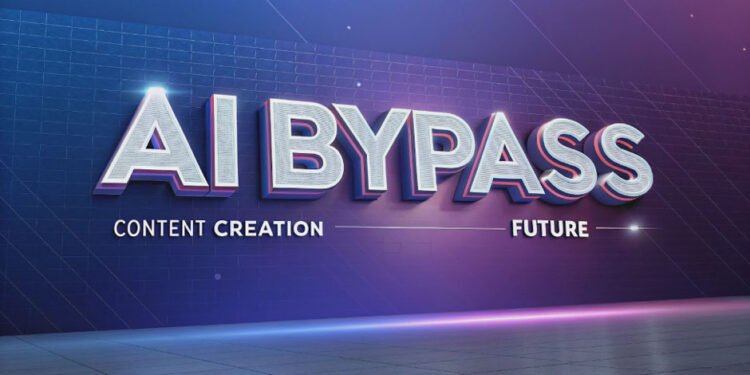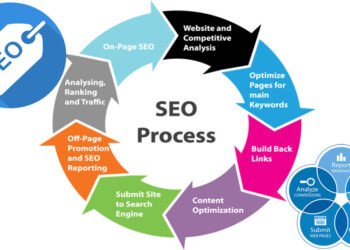The explosive growth of artificial intelligence in content creation has been remarkable. AI writing tools, such as ChatGPT, have become essential for various tasks, from generating marketing copy to crafting entire articles. However, this rapid advancement has introduced a new challenge: the detection of AI-generated content. In response, AI detection tools have emerged, leading to a counter-movement with the rise of AI bypass tools. These tools aim to “humanize” AI-generated text, rendering it indistinguishable from content written by humans. The effectiveness of these tools raises important questions, as do the ethical implications of this technological arms race. This exploration delves into the expanding landscape of AI bypass tools, assessing their functionality, effectiveness, and the broader impact on the future of content creation.
The information provided highlights several prominent AI bypass tools, each claiming to offer a solution for those seeking to evade AI detection. Let’s break down the key players and their features:
| Tool | Key Features | Target Audience | Pricing |
| Monica AI Bypass | Built-in AI detection, plagiarism-free output, SEO-friendly content, supports multiple languages | Content Creators, Students, Educators, Digital Marketers, Business Professionals | Free trial available |
| BypassGPT | Supports 50+ languages, bypasses Turnitin, plagiarism-free output | Students, Bloggers, Webmasters, Content Marketing Agencies | Free trial, subscriptions |
| HIX Bypass | Supports 50+ languages, bypasses Turnitin, plagiarism-free output | Content Creators, Students, Educators, Digital Marketers, Business Professionals, Bloggers, Webmasters, Entrepreneurs, SEO Experts, Marketing Professionals | Free trial, subscriptions, paid/premium plans |
| Humbot | Bypasses a wide range of AI detectors (including Originality.ai, Content at Scale, Winston AI), supports 30+ languages | Content Creators, Students, Educators, Digital Marketers, Business Professionals, Bloggers, Webmasters, Entrepreneurs, SEO Experts, Marketing Professionals | Free trial (500 words), subscriptions |
| BypassAI | Built-in AI detection, plagiarism-free output, supports 30+ languages | Content Creators, Students, Educators, Digital Marketers, Business Professionals, Bloggers, Webmasters, Entrepreneurs, SEO Experts, Marketing Professionals | Free trial, subscriptions, paid plans |
| Bypass AI | Supports 50+ languages, plagiarism-free output | Content Creators, Students, Educators, Digital Marketers, Business Professionals, Bloggers, Webmasters, Entrepreneurs, SEO Experts, Marketing Professionals | Free trial, subscriptions, paid/premium plans |
AI Bypass Tools: A Comparative Analysis
The following tools offer solutions for bypassing AI detection, each with its own unique approach:
- Monica AI Bypass:
- Target Audience: Content Creators, Students, Educators, Digital Marketers, Business Professionals
- Implementation:
- Paste AI-generated text.
- Check with AI detector (integrated or external).
- Click ‘Humanize’.
- Format Compatibility: Supports multiple languages including English.
- Technical Specifications: High accuracy in bypassing AI detection, 100% plagiarism-free content, error-free outputs, SEO-friendly outputs. Bypasses tools like GPTZero, ZeroGPT, and Copyleaks.
- Pricing: Free trial available.
- Content Features: Plagiarism-free, human-like content, SEO-friendly outputs.
- Detection Capabilities: Built-in AI detection capabilities.
- Example: Imagine you’ve generated a blog post about the benefits of using AI in marketing using ChatGPT. After pasting the text into Monica AI Bypass and clicking “Humanize,” the tool subtly rephrases sentences, adjusts vocabulary, and adds nuanced phrasing, making the output appear more human-written.
- BypassGPT:
- Target Audience: Students, Bloggers, Webmasters, Content Marketing Agencies
- Implementation: Similar three-step process as Monica AI Bypass.
- Format Compatibility: Supports 50+ languages.
- Technical Specifications: Similar to Monica AI Bypass, with the added benefit of bypassing Turnitin.
- Pricing: Free trial and subscription plans.
- Example: A student uses Jasper.ai to generate a first draft of an essay. They then use BypassGPT to refine the language and ensure it won’t be flagged by Turnitin.
- HIX Bypass:
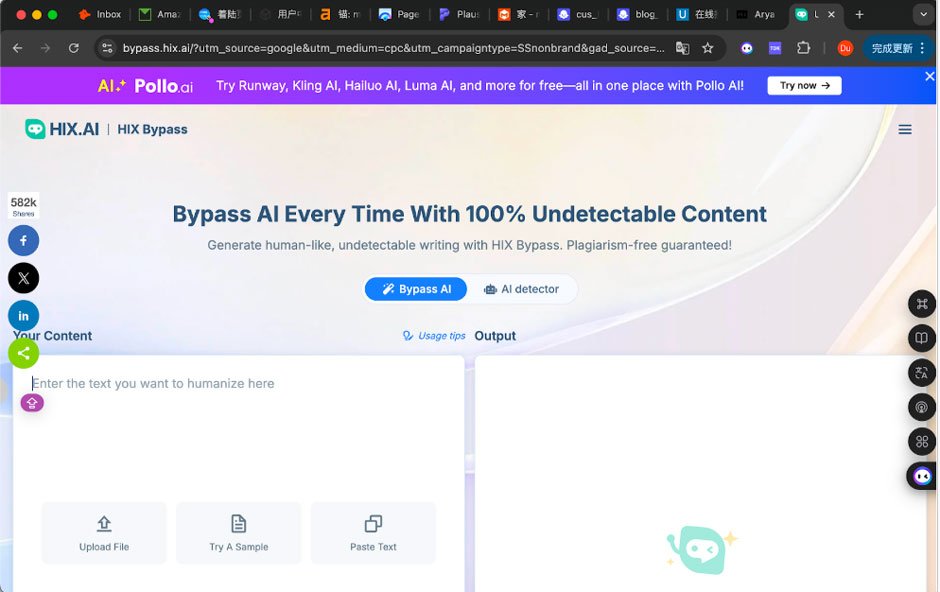
- Target Audience: A broader audience, including Entrepreneurs, SEO Experts, and Marketing Professionals.
- Implementation: Similar three-step process.
- Format Compatibility: Supports 50+ languages.
- Technical Specifications and Features: Largely mirrors BypassGPT.
- Pricing: Free trial, subscription plans, paid and premium plans.
- Example: A marketing professional uses Copy.ai to generate ad copy. They then use HIX Bypass to ensure the copy appears natural and avoids detection by AI detection tools used by advertising platforms.
- Humbot:
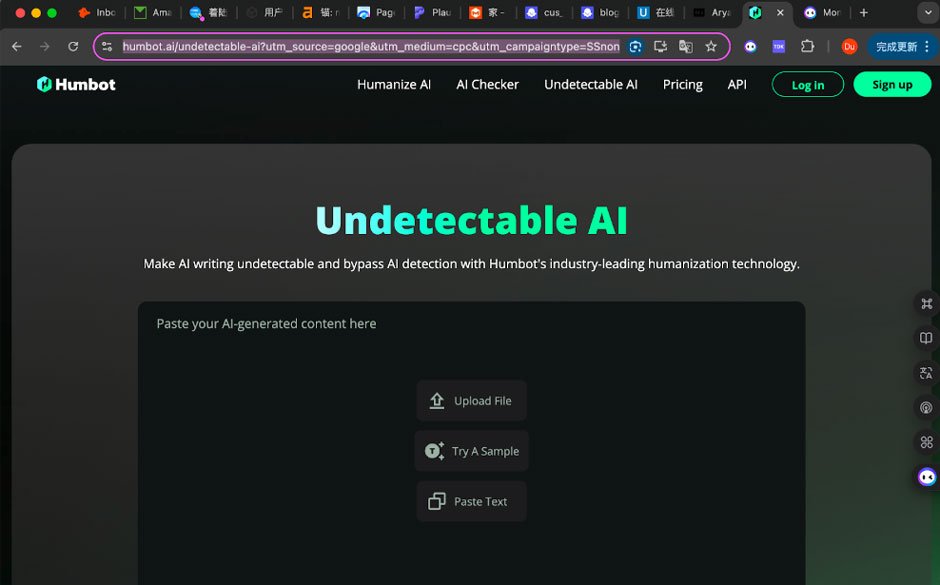
- Target Audience: Similar broad audience as HIX Bypass.
- Implementation: Similar three-step process.
- Format Compatibility: Supports 30+ languages.
- Technical Specifications: Bypasses a wider range of detectors, including Originality.ai, Content at Scale, and Winston AI.
- Pricing: Free trial (500 words) and subscription plans.
- Example: An educator uses Rytr to create educational materials. They then use Humbot to ensure the content is undetectable by the AI detection software used by their institution.
- BypassAI (bypassai.ai and bypassai.io):
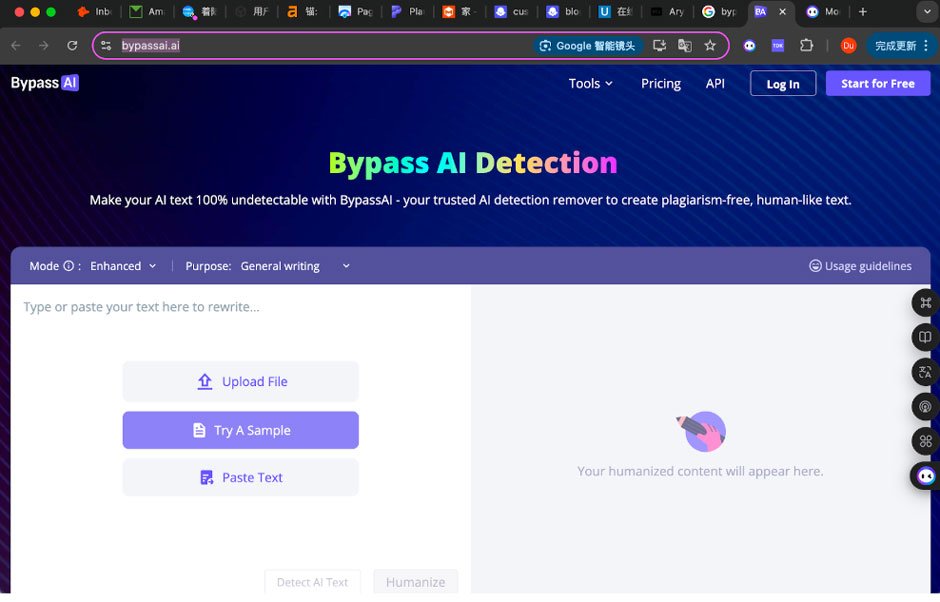
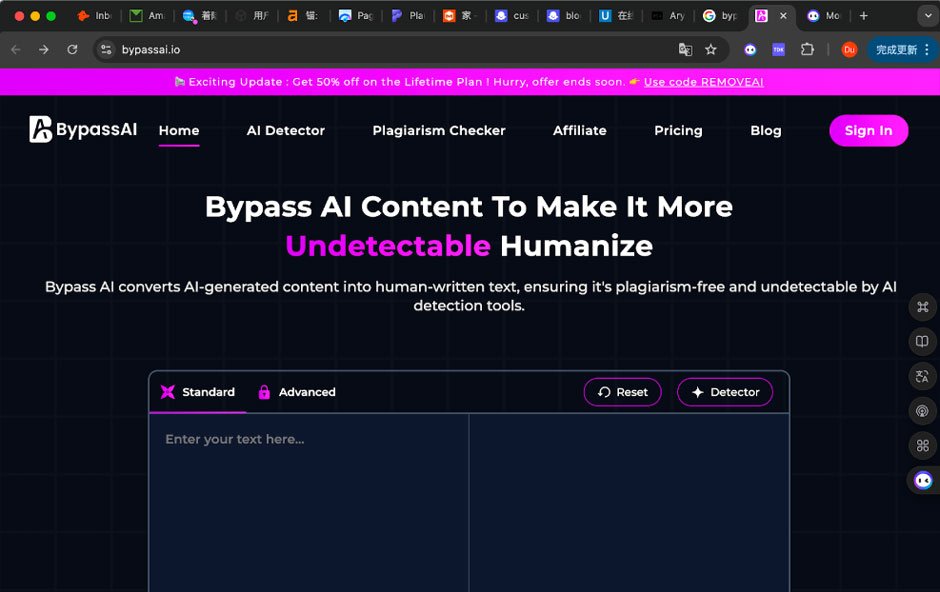
- Target Audience: Similar broad audience as HIX Bypass and Humbot.
- Implementation: Similar three-step process.
- Format Compatibility: Supports 30+ languages (bypassai.ai) and 50+ languages (bypassai.io).
- Technical Specifications and Features: Similar to other tools, focusing on plagiarism-free, human-like content.
- Pricing: Free trials, subscription plans, and paid plans.
- Example: A blogger uses Article Forge to generate blog posts. They then use BypassAI to refine the content and ensure it passes AI detection checks before publishing.
| Feature | Monica AI Bypass | BypassGPT | HIX Bypass | Humbot | BypassAI (bypassai.ai & bypassai.io) |
| Target Audience | Content Creators, Students, etc. | Students, Bloggers, etc. | Broad audience including SEO experts | Broad audience including SEO experts | Broad audience including SEO experts |
| Languages | Multiple including English | 50+ | 50+ | 30+ | 30+ (bypassai.ai), 50+ (bypassai.io) |
| Key Features | Plagiarism-free, human-like content | Bypasses Turnitin | Similar to BypassGPT | Bypasses a wider range of detectors | Plagiarism-free, human-like content |
| Pricing | Free trial | Free trial & subscriptions | Free trial, subscriptions, paid & premium plans | Free trial (500 words) & subscriptions | Free trial, subscriptions, & paid plans |
The Mechanics of AI Bypass: How Does it Work?
AI bypass tools employ various techniques to mask the telltale signs of AI-generated text. These often involve:
- Lexical Substitution: Replacing common AI-generated phrases with more nuanced and varied vocabulary.
- Sentence Restructuring: Altering sentence structure and length to mimic human writing patterns.
- Synonym Insertion: Strategically using synonyms to avoid repetitive language.
- Adding “Human” Errors: Introducing subtle grammatical imperfections or stylistic variations to create the illusion of human authorship.
The Ethical Dilemma: Balancing Innovation and Integrity
The emergence of AI bypass tools raises complex ethical questions. While these tools can be valuable for legitimate purposes, such as improving the clarity and readability of AI-generated content, they also open the door to potential misuse.
- Academic Integrity: Students could use these tools to submit AI-generated essays as their own, undermining the educational process.
- Misinformation and Propaganda: The ability to create undetectable AI-generated content could be exploited to spread false information or manipulate public opinion.
- Copyright Infringement: While many tools claim to produce plagiarism-free content, the underlying mechanisms may still borrow heavily from existing sources, raising copyright concerns.
The Future of Content Creation: A Symbiotic Relationship?
Despite the ethical concerns, AI bypass tools are likely here to stay. The future of content creation may involve a symbiotic relationship between AI writing tools and their bypass counterparts. As AI detection methods become more sophisticated, so too will the techniques used to circumvent them. This ongoing arms race will likely drive innovation in both fields, ultimately leading to more sophisticated and nuanced AI-generated content.
My Experience with Monica AI and its Bypass Tool:
I’ve had the opportunity to experiment with Monica AI, and I’m particularly impressed with its integrated bypass functionality. It seamlessly integrates AI writing and bypassing within a single platform, streamlining the content creation process. The quality of the “humanized” output is generally high, and the tool effectively addresses many of the common issues associated with AI-generated text. It’s a testament to the potential of these tools when used responsibly.
Frequently Asked Questions (FAQ):
- Q: Are AI bypass tools legal? A: Currently, there are no specific laws prohibiting the use of AI bypass tools. However, their use for unethical purposes, such as academic dishonesty or spreading misinformation, could have legal ramifications.
- Q: Can AI bypass tools guarantee 100% undetectability? A: No tool can guarantee complete undetectability. As AI detection methods evolve, bypass tools must constantly adapt.
- Q: Are AI bypass tools expensive? A: Pricing varies depending on the tool and its features. Many offer free trials or freemium models, while others require subscriptions or paid plans.
- Q: What is the future of AI bypass technology? A: The future likely involves a continuous evolution of both AI detection and bypass methods, leading to more sophisticated and nuanced AI-generated content.
Key Takeaways:
- AI bypass tools are a rapidly evolving technology with the potential to significantly impact content creation.
- While they offer valuable benefits, such as improving the quality of AI-generated text, they also raise ethical concerns regarding potential misuse.
- The future of content creation likely involves a symbiotic relationship between AI writing tools and AI bypass technologies.
- Responsible use and ongoing dialogue about the ethical implications are crucial for navigating this evolving landscape.
Let’s delve deeper into specific scenarios where AI bypass tools might be employed, both ethically and unethically:
- Content Marketing: Imagine a marketing team tasked with creating a large volume of blog posts. AI writing tools can generate the initial drafts, and AI bypass tools can then refine the language and style to ensure it resonates with the target audience. This ethical use case can significantly boost productivity and content output.
- Academic Research: A researcher could use AI to analyze large datasets and generate summaries or reports. An AI bypass tool could then help refine the language and ensure the output adheres to academic writing standards. However, submitting this AI-generated content as original research would be unethical.
In summary, the rise of AI bypass tools marks a significant development in the evolving landscape of content creation. While these tools offer innovative solutions for enhancing AI-generated text, their emergence also brings forth critical ethical concerns. The potential for misuse in academic integrity, misinformation, and copyright infringement cannot be overlooked. As AI detection methods advance, the interplay between AI writing tools and bypass technologies is likely to deepen, creating a complex relationship that demands responsible usage and ongoing discourse about ethical implications. Ultimately, navigating this landscape will require a careful balance between leveraging technological advancements and upholding integrity in content creation.
